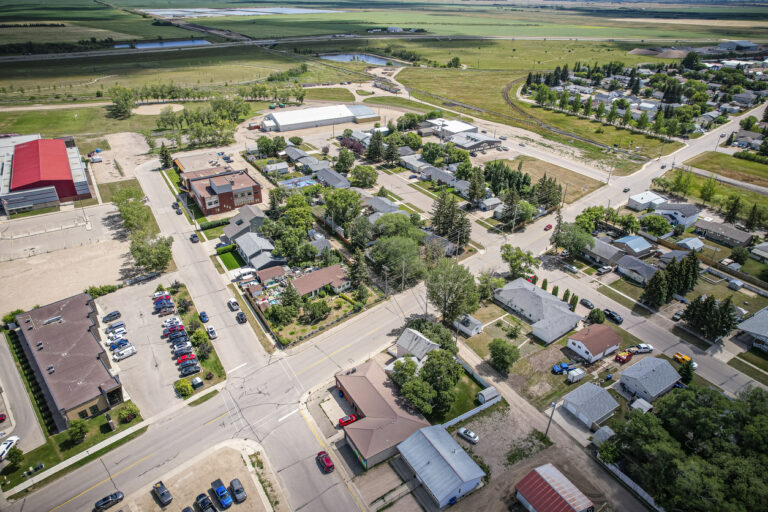One Critical Topic Underlying Youth and Economic Development
Verona Thibault
We frequently get asked about the return on investment or the socio-economic benefits for various initiatives. What we should include in these conversations is a very important question – what more can we do to retain, attract, motivate, and support our youth, (people aged 15-29)?
An RBC sponsored study by Youthful Cities[1], found eleven topics that define a community’s attractiveness as a place for youth. (We’ve broadly applied the city concepts to any community regardless of size.) The topics: good youth jobs, public health, cost of living, income generation, education and training, equity and inclusion, climate change, public transportation, digital access, local economy, and entrepreneurial spirit. Some of these topics are self explanatory but a couple are complimentary – good youth jobs correlates to income generation. It is not any job, it is a livable, gender neutral wage that supports a family.
But one of the topics underlays many of the other topics, digital access, an aspect of SEDA’s Connected Saskatchewan initiative. Digital access is one that we must address for everyone, but especially for youth:
According to the study – “In today’s online world, access to technology and the internet is essential to being a part of the workforce… Having WIFI, affordable technology and accessories, and access to information and data are all required to work in this modern day. Municipalities need to be providing and promoting this access to young people entering the labour force.”
Communities’ attractiveness to youth defined by
Good youth jobs
Public health
Cost of living
Income generation
Education and training
Equity and inclusion
Climate change
Public transportation
Digital access
Local economy
Entrepreneurial spirit
The mental health challenges facing youth have been exacerbated by COVID. When asked the question, ‘aside from what you are doing, what can we do…?’, Robb Nash, the lead of the Robb Nash Project[2] was quick to provide a one-word answer – purpose; give them purpose. Youth want to contribute, they want to engage, they want to be part of the solution, they want to learn, they want to have purpose in what they do and in who they are. This aligns well with the other attractiveness topics of education and training, equity and inclusion, climate change and entrepreneurial spirit.
While there is no silver bullet solution, we must give youth the tools to achieve purpose and to collaborate, to problem solve, and to brainstorm. One of the most powerful tools is affordable, abundant internet. That said, the dark side of the internet must be and can be managed as youth are directed toward positive, productive purpose.
High paying, youth-oriented jobs can also provide purpose. According to the World Economic Forum, youth across the country have been severely and disproportionately affected by the COVID crisis. But it is also a once-in-a-generation opportunity to prepare youth to thrive in the future of work. Investing in and re-skilling youth now can help build more just, inclusive, and resilient economies.[3] A statistic from our blog ‘The Economic Impact of Broadband’ taken from the Institute for the Future, 85 per cent of new jobs in 2030 do not exist today. If this sounds unrealistic, read the spring 2021 issue of Industry West, ‘The Future’s So Bright’ and look closely at the ‘new’ skills, knowledge, and expertise of these very successful companies. Most have evolved in the past 10 years! And remember, the first iPhone, the iPhone 4, was introduced into major Saskatchewan cities in 2011– ten years ago.[4]
Further, according to the FRED (US Federal Reserved Economic Data) there were 8 million jobs unfilled in the USA in June 2021. And according to the Canadian Federation of Business (CFIB) there were 235,000 jobs unfilled in Canada in 1Q21. Many can be filled by working from home – so why can’t home be in Isle La Crosse, Nokomis, or Coronach? These jobs will require new skills, a much deeper understanding of the business application of technology, an attitude toward entrepreneurship, critical thinking and much more. But a goal we can strive for.
So, what more can we do to retain, attract, motivate, and support our youth, people aged 15-29? Three things come to mind. First, we can provide access to affordable, abundant internet – digital access. Second, we can be mindful of the other ten topics that make a community attractive to youth – good youth jobs, public health, cost of living, income generation, education and training, equity and inclusion, climate change, public transportation, local economy, and entrepreneurial spirit. Third, and most importantly, we must create purpose for our youth.
All three things listed above are very interrelated and with varying circumstances, the approach and process may be different from community to community. We must give thoughtful creative deliberation to how we form these three topics into a comprehensive youth strategy. A strategy that can be actioned with urgency – our future depends on it, literally.
[1] https://www.rbc.com/dms/enterprise/futurelaunch/youthfulcities-urban-work-index.html
[2] https://www.robbnash.com/about
[3] https://www.weforum.org/agenda/2020/07/covid-19-why-investing-in-youth-will-future-proof-the-economy/
[4] https://www.sasktel.com/about-us/company-info/vision-mission-and-values/history-site/history





